This article was co-authored by wikiHow staff writer, Hunter Rising. Hunter Rising is a wikiHow Staff Writer based in Los Angeles. He has more than three years of experience writing for and working with wikiHow. Hunter holds a BFA in Entertainment Design from the University of Wisconsin - Stout and a Minor in English Writing.
There are 9 references cited in this article, which can be found at the bottom of the page.
This article has been viewed 36,385 times.
Learn more...
If you want to read your Bible but you don't want to carry a book with you everywhere, you can easily access it on any device connected to the Internet. There are many websites and options available for free so you can read wherever you are. Once you find the right online Bible, you’ll be able to make a daily routine out of reading to continue learning.
Steps
Choosing the Right Online Bible
-
1Choose a Bible translation to read. Since the Bible is an ancient text, it has been translated by many different groups. While the core ideas and messages are the same, some translations may use more dated language or be more difficult to follow along with. Browse through a few of the translations to see which one you like best.[1]
- There are over 60 English language translations to choose from. Try a few before selecting one!
- Orthodox and Catholic Bibles have more books than standard Protestant translations.
- If you go to church, find the version of the Bible that they use during their service.
Common Bible Translations
The English Standard Version (ESV) uses simple language while still maintaining the literal meaning of the text.
The King James Version (KJV) is the most used translation in the United States and translates the Bible word for word.[2]
The New International Version (NIV) is not word for word, but the text conveys the same meaning.
The New Living Translation (NLT) uses simpler language and is a meaning-based translation.[3]
-
2Use Bible Gateway to find multiple translations on one site. Bible Gateway provides an easily accessible online resource for you to find the translation you prefer. The website also offers audio versions of the Bible, reading plans, and daily devotionals.[4]
- Access Bible Gateway here: https://www.biblegateway.com/.
- Use the passage lookup feature if you need to find a specific Bible verse.
- Bible Gateway also provides Orthodox, Catholic, and multilingual Bible options.
Advertisement -
3Find an online children’s Bible for a kid-friendly reading experience. Children’s Bibles use simpler language so younger readers can understand it better. If you want your child to read along with the same passages as you, then search online for the children’s Bible of your choice.[5]
- Some children’s Bible websites offer games and interactive videos to engage kids further.
- Some good examples of online children’s Bibles are Superbook (http://us-en.superbook.cbn.com/sb_bible) and Bible Hub (https://biblehub.com/childrens/).
-
4Download a Bible app on your phone or tablet to read offline. If you want to have your Bible with you at all times, look for apps on your phone or tablet. Many of the apps are free and offer multiple translations as well as reading plans and devotionals. Read the reviews on your app store and pick the one you prefer.[6]
- Apps that are easy to download and read include YouVersion Bible and Bible.is.
- Some apps may offer audio options so you can hear the scripture read aloud as well as multilingual translations.
Creating a Reading Routine
-
1Choose a set reading time for each day. Find a consistent time each day so you can make a routine out of reading the Bible. Try to make it a relaxing time, such as in the morning before you start your day or in the evening after everything has settled down. Aim to read for at least 15-20 minutes each day.[7]
- Read in a comfortable place, like in a cushiony chair or in bed, to make it more relaxing.
-
2Start at Genesis if you want to read the Bible in order. To read the Bible from start to finish, start at Genesis 1:1. Read a chapter at a time if you want to keep reading sessions short. Keep reading through the Old and New Testament until you finish Revelations.[8]
- Most web pages display 1 chapter on a single page so it doesn’t have to keep loading.
-
3Find a Bible study on a single book or topic if you want for a focused devotional. Think about what you want to get out of your daily devotional and search online for reading plans on that topic. Choose an option that has you read short passages each day over the course of a week or two. These reading plans will either have you deeply focus on one book or have you read from different books and chapters throughout the Bible to learn about a topic.[9]
- For example, if you want to read the parables of Jesus, pick a New Testament study through the 4 Gospels to follow along with Jesus’s life.
- Look for reading plans online or follow along with a Bible study book.
-
4Read 4-5 chapters five days a week to finish the Bible in a year. Read the book in chronological order or combine reading the Old and New Testaments at the same time. Stay adamant with your reading plan so you can finish within the year. Choose a couple of days during the week, like the weekend, to take a break from reading.[10]
- For example, you may read Genesis 1-4 as well as Matthew 1 in a single day. That way, your reading plan stays interesting.
- Try to read a few verses or a chapter when you have a short break of time, such as waiting for an appointment or when you have a few extra minutes before you need to leave.
-
5Find a partner or group to read the Bible with. If you find it difficult to read and focus alone, look for other individuals who also want to make a reading plan. Meet up weekly and discuss what you’ve read to hold each other accountable for your reading.[11]
- Many churches or religious groups offer Bible studies each week that you could join. See if your church has groups or a daily reading program to get you started.
Warnings
- Don’t click on questionable pop-ups or intrusive ads since they could contain malicious content.⧼thumbs_response⧽
References
- ↑ https://www.ucg.org/the-good-news/whats-the-difference-between-various-bible-versions
- ↑ http://bibleresources.americanbible.org/resource/a-brief-description-of-popular-bible-translations
- ↑ http://bibleresources.americanbible.org/resource/a-brief-description-of-popular-bible-translations
- ↑ https://www.biblegateway.com/
- ↑ https://biblehub.com/childrens/
- ↑ https://www.bible.com/
- ↑ https://blog.biblesforamerica.org/7-ways-to-build-up-a-daily-bible-reading-habit/
- ↑ https://blog.biblesforamerica.org/7-ways-to-build-up-a-daily-bible-reading-habit/
- ↑ https://www.sparklesofsunshine.com/tipstodevelopingabiblereadingroutine/

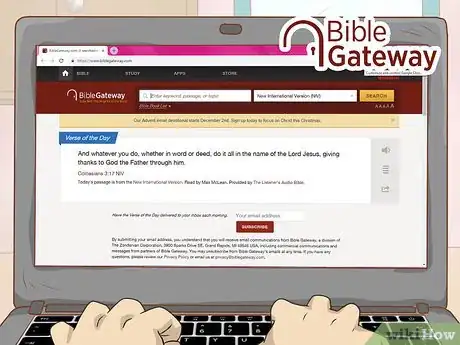

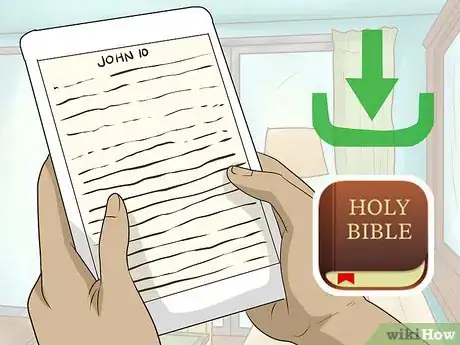
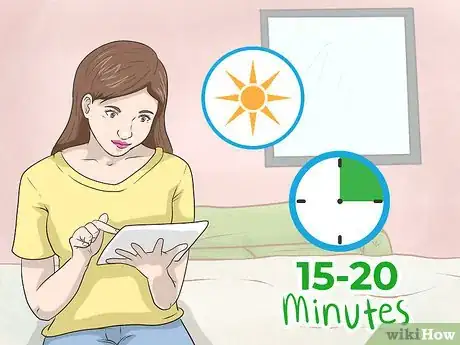
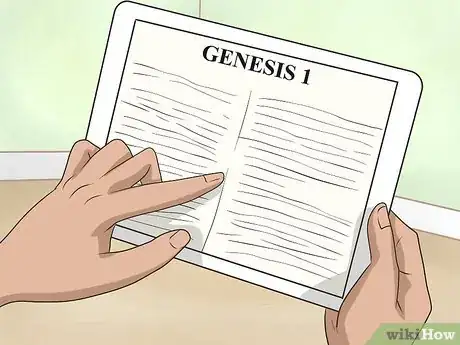

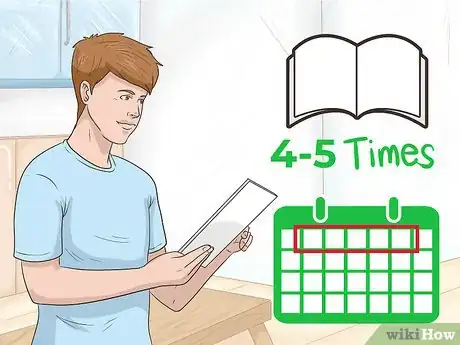






-Step-9.webp)





















































